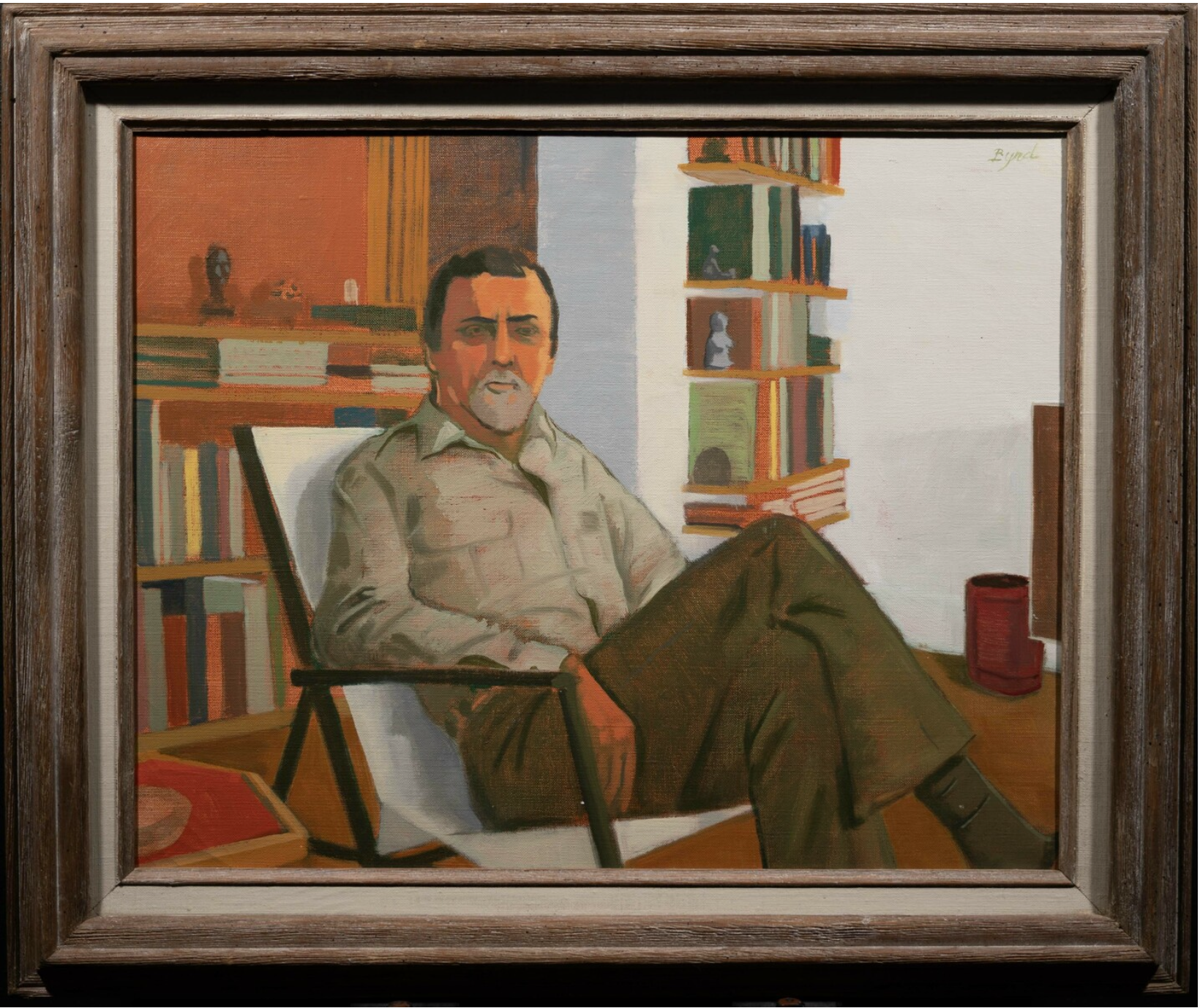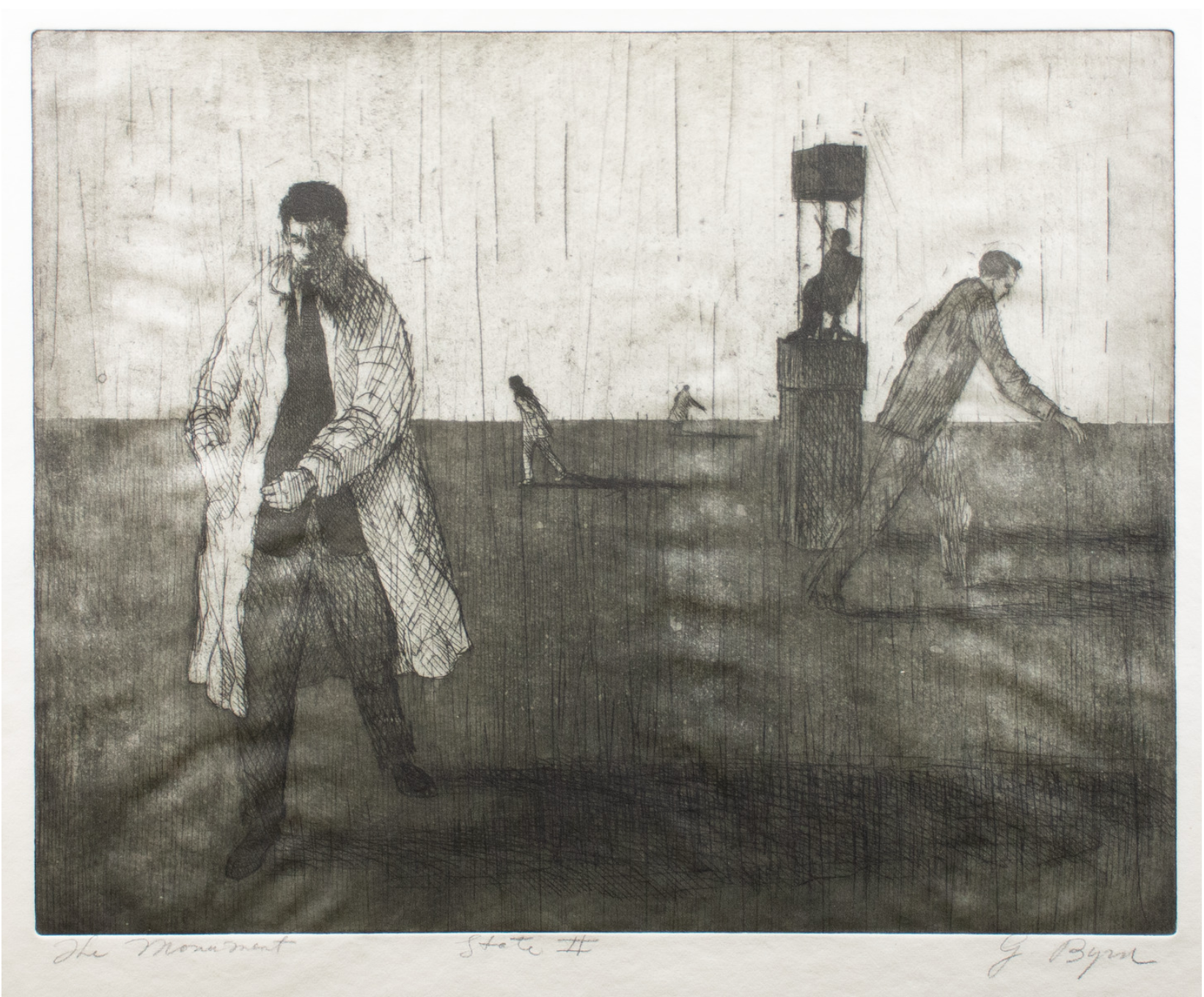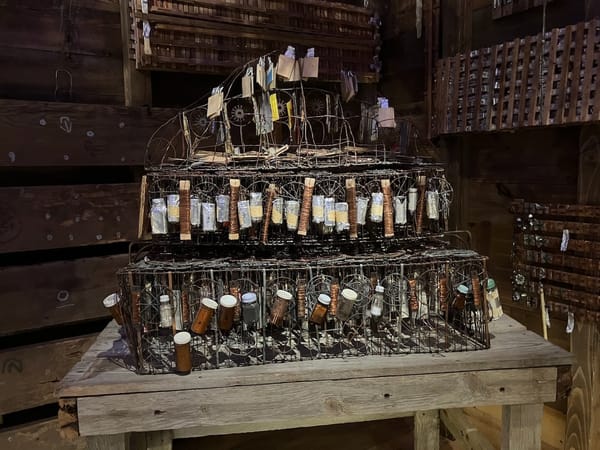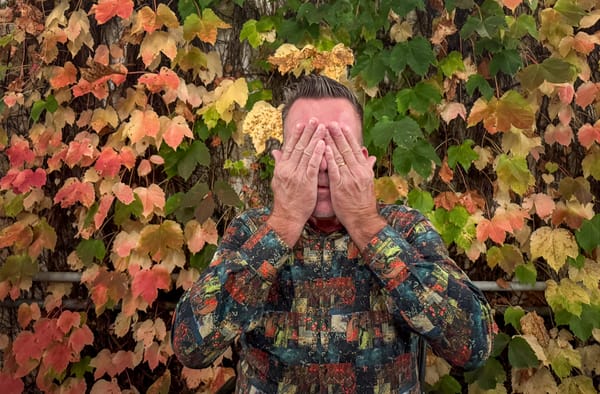In the Quiet Margin:The Art of D.G. Byrd
by Emma Hitzman
Decatur Gibson Byrd was born and raised in Tulsa, Oklahoma, where he began his professional journey as a draftsman before being drafted into military service during World War II. Though he received all his formal education outside the state of Wisconsin, Byrd’s artistic legacy is deeply entwined with the state of Wisconsin. During his time at UW-Madison he made a lasting impact on students, faculty, and the entire art community from 1955–2002.
By the early 1950s, Byrd had cultivated a profound interest in figurative painting. Deeply influenced by the principles of social realism, his early works frequently depicted scenes marked by psychological tension, alienation, and the quiet despair of mid-20th-century American life. His canvases often wove together elements of autobiography and dreamlike fantasy, resulting in a visual language that was both intensely personal and universally resonant.
Central to Byrd’s work were themes of solitude, marginalization, and identity. Drawing upon his Shawnee heritage, he imbued his paintings with poignant social commentary—particularly on issues of racial injustice, inequality, and the enduring human struggle for dignity and recognition. His unique perspective allowed him to give voice to experiences that were often overlooked or suppressed in mainstream narratives.

As his career progressed, Byrd gradually shifted his focus toward the rural landscapes of Wisconsin. While these later works marked a departure in subject matter, they retained the emotional gravity and philosophical depth of his earlier paintings. His landscapes—rich in mood, texture, and color—revealed a spiritual connection to the land and a continued exploration of human presence within nature. The hallmarks of Modernism, especially in his daring color palettes and expressive brushwork, remained evident throughout his artistic evolution.
Beyond his contributions to the visual arts, Byrd was also a dedicated educator and mentor. During three decades at UW-Madison, he inspired generations of students, many of whom credit him as a pivotal influence in their artistic development. His commitment to teaching, coupled with his uncompromising vision as an artist, has left a lasting impact on the Midwest’s artistic landscape and beyond.

Emma Hitzman was raised in the rural Midwest and has lived in Northeast Wisconsin for a majority of her career. She received her BA in Studio Arts and a minor in Arts Management with an emphasis in Gallery and Museum Practices in 2016 from the University of Wisconsin-Green Bay. Currently, she represents the Cedarburg Art Museum as Museum Curator. Hitzman’s artwork and research centralizes around nostalgia, remembered environments, and how they are explored through alternative photographic processes.




